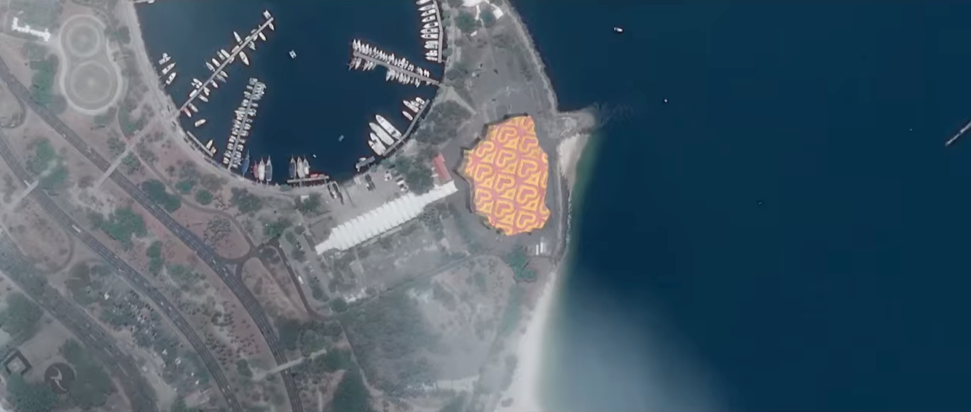Graffiti Only Visible From Space: Where Does Landscape End & Art Begin?

I prefer to keep my anonymity. I think artwork can speak a lot louder if it’s not narrowed by the identity of the artist.
– insa
Graffiti is the reclamation of the commons – a digestive act that challenges the boundaries of private property, recognizing life as art and everything in reach as media with which to ornament the world. Countering the corporate invasion of attention, treating metropolitan ecologies as playgrounds where the audience and artist join in mutual discovery and constant re-imagination, it’s a form well-suited for this age: in which the inner and the outer worlds bleed together, we acknowledge our ideas of what is “natural” (and what isn’t) as confabulations, and we learn to joyously participate in something vast and unimaginable taking shape through us.
As we begin to grasp what it will mean for us to truly live in planetary culture, something’s shifting in how we construct our notions of the self – and with it shifts our lived experience of our environments, the spaces that we share. As we become transparent to each other and the bigger picture, we become empowered in our new humility to live as gestures of a cosmic creativity unfettered by proprietary claims. That’s not to say that we’ll no longer celebrate the artist – merely that the artist will himself/herself be recognized as art, continuous with all the rest of it, the universe quite literally understood as one great metered rhyme, one all-embracing work and play.
It’s from this orbital perspective we encounter insa’s greatest project yet – the UK artist’s Rio de Janeiro installation, photographed from space, accomplished by a masterful collaboration spanning hemispheres and languages, a meta-organism dedicated to the loving execution of what might be a first: a GIF of geographic scale. Appropriately made of flowing hearts arranged within a molten matrix, perched beside the sea, insa’s work is reminiscent of Tibetan sand mandalas, multiple exposures captured over days as it’s destroyed repeatedly.
We view the moving painting through the sensory extension of a satellite – collapsing the dualities of human and machine, of ground and sky, of finite sequence and infinite loop, and bringing us together in communion in the presence and performance of new media. In this, we have the opportunity to recognize that we are Earth observing Earth through Earth...so where does landscape end and art begin? Who’s watching this? And even if we settle on an answer, can we even make those same naïve distinctions anymore?
Michael Garfield is an evolutionary biologist and science writer, painter, guitarist, and the host of Future Fossils Podcast. Go deep with his work and enjoy his extensive free archives at Patreon.
